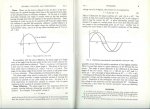120227-1534 ESR
rbalex:
Convenience is only because I could choose any point, but I need to choose some point.
If I am going to compare two time varying sine waves with one another of precisely the same frequency for the phase difference between them, if any, then I can do this with a snapshot in time and compare their displacement relative to each other. Or in time I can measure the travel time for one wave to reach a comparable point of the other waveform having stored the other waveforms position at the starting time of the measurement.
If our selected point is a positive zero crossing, then I do not have to discuss scaling. If some non-zero point is selected, then the two curves need to be normalized in amplitude.
VAN and VBN do not have positive zero crossings at the same time. Thus, zero crossings alone without slope information do not provide a unique time point within one cycle's period.
I did not understand your point of referencing my post 1471. I am not ignoring the comment but I do not understand it.
For those that want to introduce pulses or noise, don't. We are discussing sine waves so no harmonics or noise pulses.
.


